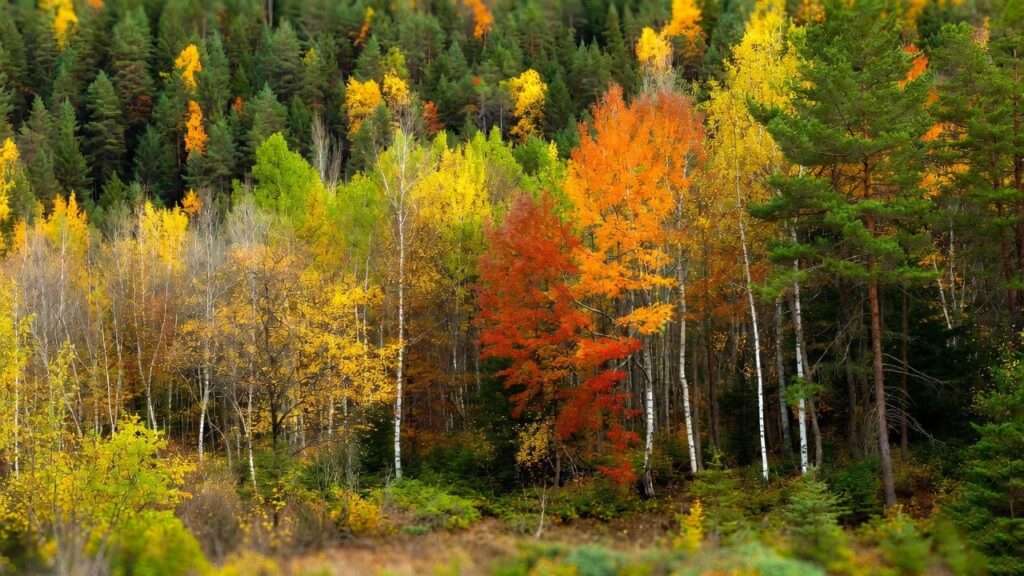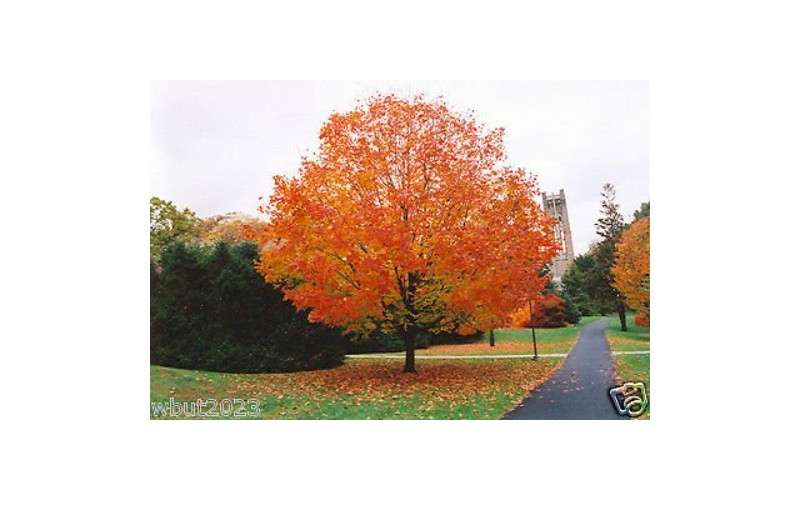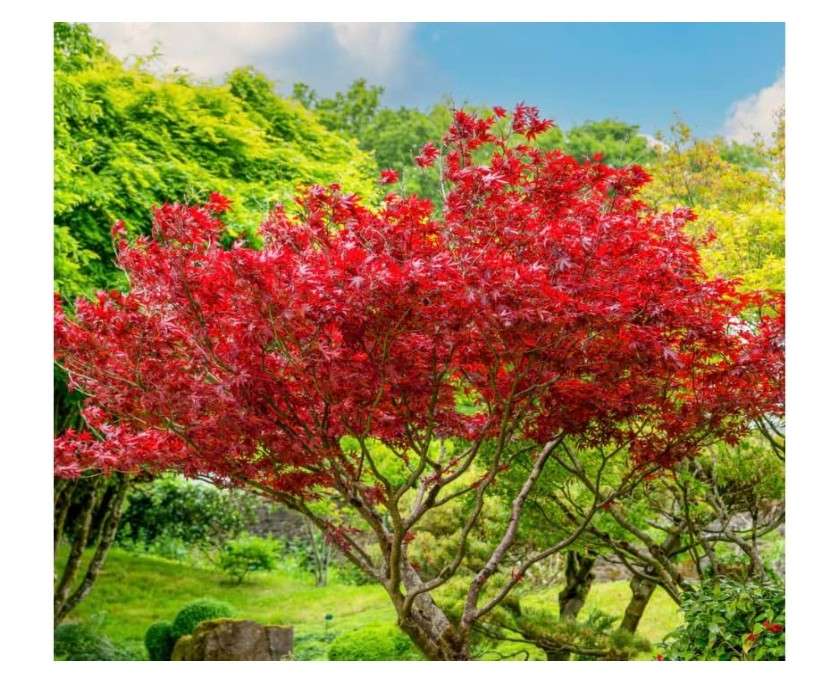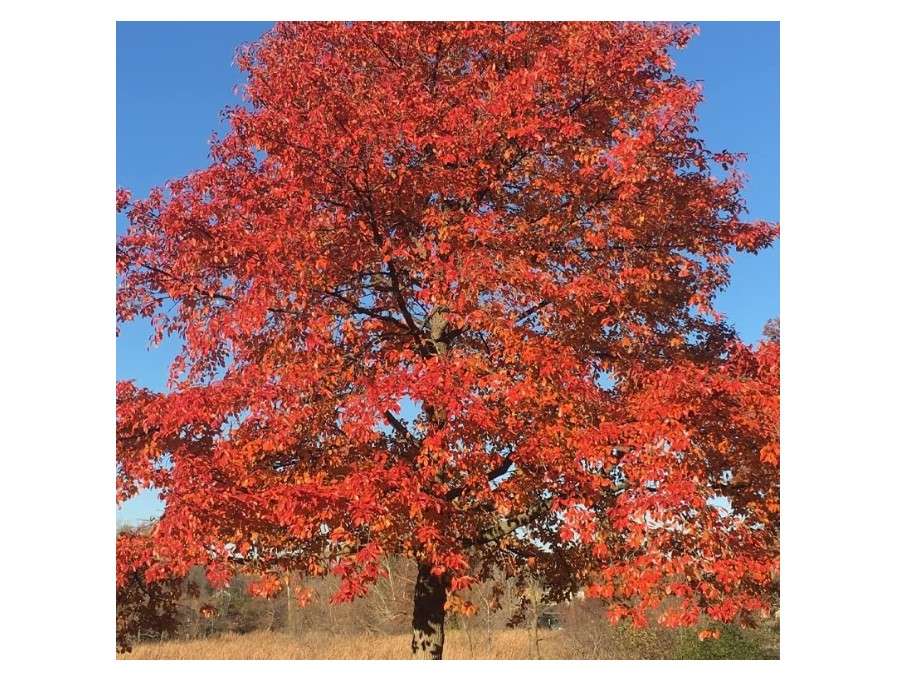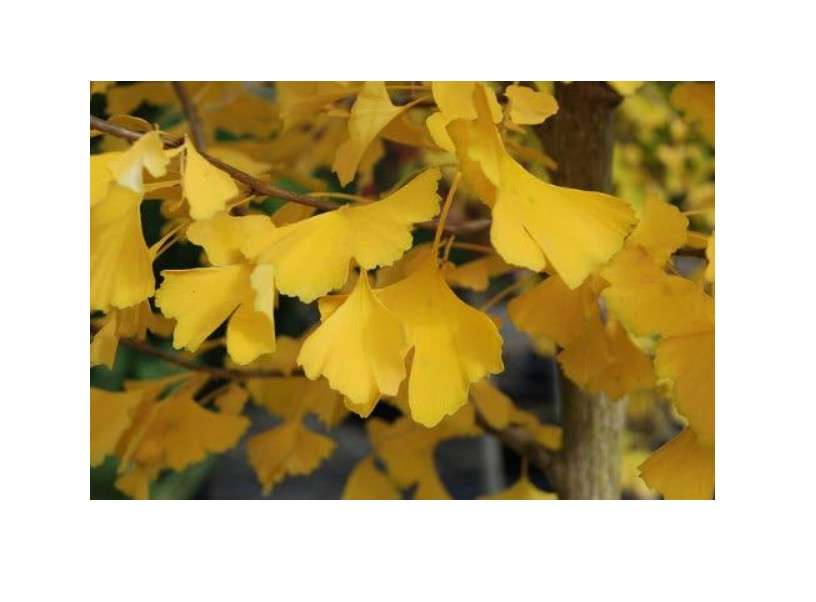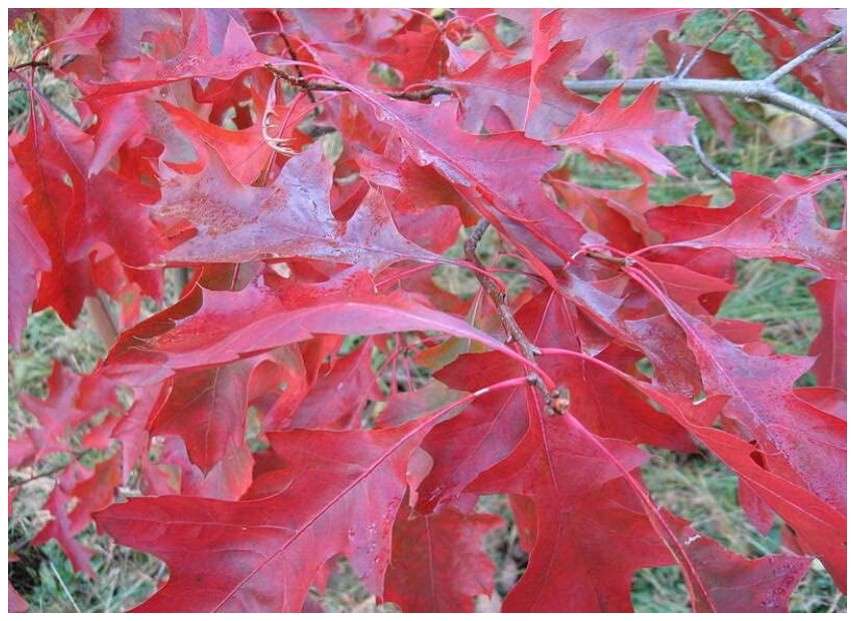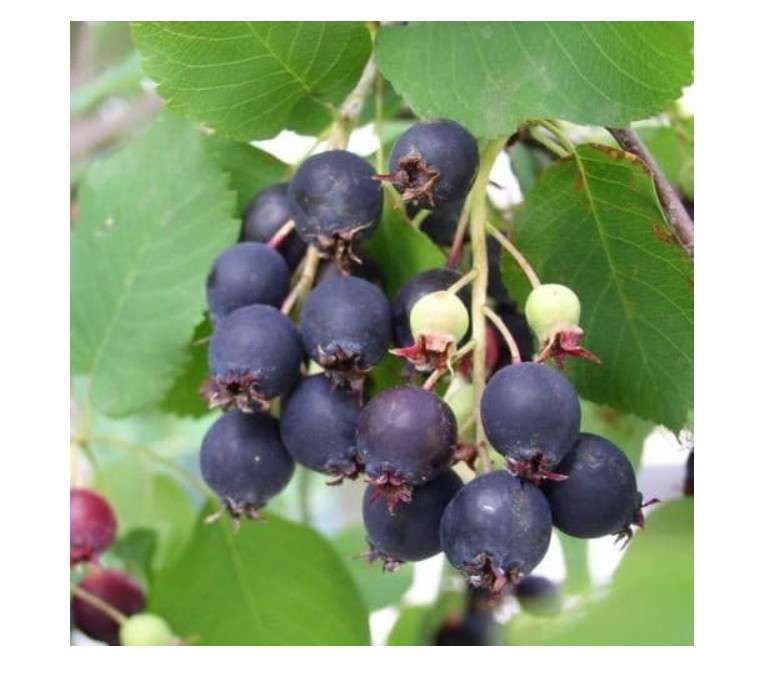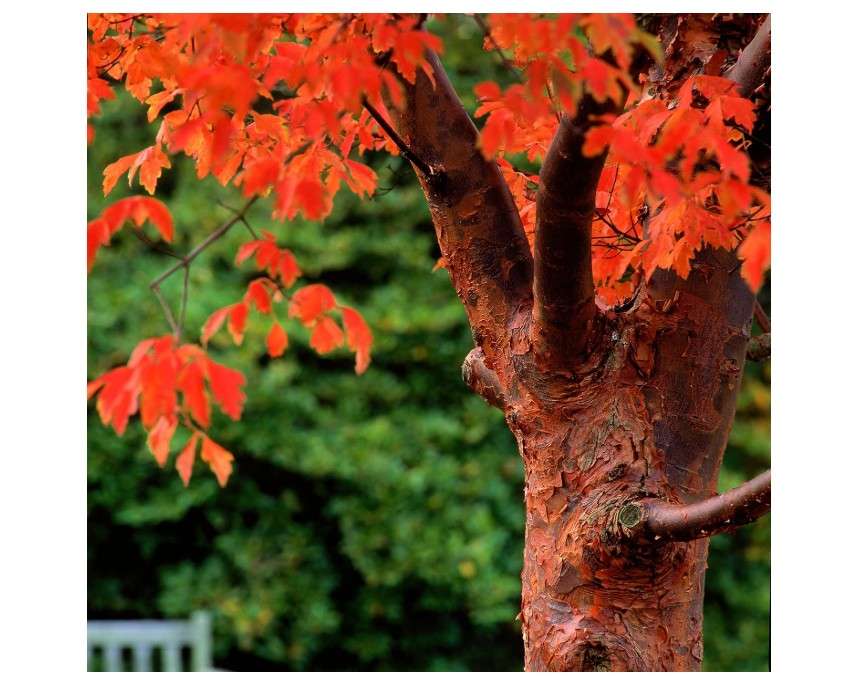When you scroll through stunning landscape photography, the star is always the autumn tree—a towering blaze of crimson, gold, and orange that defines the season. But often, the reality in your own yard falls flat, turning into a disappointing shade of dull brown or muted yellow. You’ve invested time and money, only to realize the tree you chose lacks the genetic consistency or hardiness required to truly light up your property. Fall foliage is an investment in your home’s curb appeal and your emotional well-being. The challenge is choosing a tree that delivers predictable, vibrant color without turning into a maintenance nightmare.
1.2. Why You Need This Guide (The Solution)
Choosing a tree for fall foliage is one of the most important investments you can make in your home’s curb appeal and personal enjoyment. It shouldn’t be a gamble. This comprehensive guide cuts through the uncertainty to present the best 10 autumn trees available today. We provide an Expert Analysis, simplifying complex horticultural science, to help you make an Informed Decision. We’ve analyzed hundreds of Amazon customer reviews, expert hardiness data, and color reliability reports to ensure that every tree on this list is a proven performer. This strategic planting guide is designed to match the perfect tree to your specific hardiness zone, soil type, and available space—guaranteeing you get that show-stopping fall display you’ve always wanted.
1.3. How We Chose the Top 10
To build this authoritative resource and identify the absolute best 10 autumn trees, we focused on five critical criteria. Our trees were selected based on: Vibrancy and Consistency of Fall Color (they must perform every year, not just on perfect weather years), wide Hardiness (Zones), reliable Growth Rate, proven Disease/Pest Resistance, and verifiable Amazon Popularity/Reviews from real buyers. Only trees that excelled in all these categories made the final cut.
2. Decision-Making Matrix: Comparing the Top Contenders (At-a-Glance Table)
We’ve distilled the top considerations for easy comparison. Match your needs (Best For) with the appropriate Hardiness Zone and rating.
| Tree Name | Best For | Key Data (Zone/Rating) |
| 1. Autumn Blaze Maple | Fastest Shade and Red Color | Zones 3–8 / 4.6 Stars |
| 2. Sugar Maple | Classic, Multi-Color Display | Zones 3–8 / 4.4 Stars |
| 3. Japanese Maple | Small Yards & Containers | Zones 5–8 / 4.7 Stars |
| 4. Black Gum (Tupelo) | Difficult or Wet Soils | Zones 3–9 / 4.5 Stars |
| 5. Ginkgo Biloba | Urban Settings & Low Mess | Zones 3–9 / 4.5 Stars |
| 6. Scarlet Oak | Longevity & Deep Crimson | Zones 4–9 / 4.3 Stars |
| 7. Serviceberry | 4-Season Interest (Bloom/Berry/Color) | Zones 4–9 / 4.6 Stars |
| 8. Quaking Aspen | Northern Climates & Sound | Zones 1–6 / 4.2 Stars |
| 9. Paperbark Maple | Unique Bark & Small Garden | Zones 4–8 / 4.7 Stars |
| 10. Sweetgum | Predictable Color Range | Zones 5–9 / 4.1 Stars |
3. Top Pick for Consistent, Reliable Color (The Overall Winner)
#1. Autumn Blaze Maple (Acer x freemanii ‘Autumn Blaze’)
- Compelling Product Description: The undisputed king of fast-growing, reliable fall color, the ‘Autumn Blaze’ is a successful hybrid of the Red Maple and Silver Maple. It was engineered for the best traits of both: the intense, fiery crimson foliage of the Red Maple combined with the rapid growth and tough adaptability of the Silver Maple. It is known for its dense, symmetrical oval canopy and holding its blazing red leaves longer than almost any other maple, extending your fall season into late November.
- Price: $55.95
- Key Features & Benefits:
- Extremely Fast Growth Rate: Easily adds 3–5 feet (1–1.5m) in height per year, providing rapid shade and landscape impact.
- Superior Structure: The branch angles are wider and stronger than those of its Silver Maple parent, making it less prone to storm damage.
- Adaptable & Resilient: Tolerant of most soil types, including clay, and wide pH ranges.
- Pros & Cons:
- Pros: Iconic, reliable, blazing red color; rapid shade development; excellent hardiness (Zones 3–8).
- Cons: Requires large space (canopy spreads up to 40 ft/12m); can be messy with seeds and leaves in late fall.
- Amazon Customer Ratings & Reviews: 4.6 Stars (Based on 1,500+ reviews). Customers praise the “instant gratification,” “unbelievable color intensity,” and the robust health of the plants upon arrival.
- Why It’s a Good Choice for: Homeowners who want a classic, blazing red fall color display and need a large, reliable shade tree in a hurry.
- Ideal Use Case: Suburban yards, street planting (where space allows), or as the main focal point in a large landscape centerpiece.
4. The Best 10 Autumn Trees Detailed Reviews and Comparisons (Cont.)
#2. Sugar Maple (Acer saccharum) – The Classic Icon
- Compelling Product Description: The quintessential North American fall tree and the source of maple syrup, the Sugar Maple is revered for its majestic size and stunning, multi-hued display. Its iconic five-lobed leaves transform into a breathtaking combination of gold, burnt orange, and brilliant crimson, often all at the same time. While it is slower growing than the Autumn Blaze, it offers unparalleled longevity and a classic, massive canopy.
- Price: $4.51
- Key Features & Benefits:
- Classic Fall Palette: Delivers the most diverse mix of yellow, orange, and red of any single species.
- Long-Lived: With proper care, these trees can live for hundreds of years, becoming a true legacy plant.
- Deep Shade: Creates dense, cool shade perfect for summer patios and outdoor living spaces.
- Pros & Cons:
- Pros: Iconic, deep colors; excellent for shade; high value for property appeal; supports wildlife.
- Cons: Slower growing; less tolerant of salt, heat, and poor urban soils than Red Maple hybrids; sensitive to soil compaction.
- Amazon Customer Ratings & Reviews: 4.4 Stars. Reviewers often highlight its traditional beauty and the deep, rich intensity of its color.
- Why It’s a Good Choice for: The purist who values traditional, deep fall colors and has the space and patience for a monumental shade tree.
- Ideal Use Case: Large properties, country estates, creating a naturalized forest look, or for homeowners interested in tapping sap.
#3. Japanese Maple (Acer palmatum) – The Small Space Specialist
- Compelling Product Description: The Japanese Maple genus includes hundreds of cultivars, but they are universally prized for their delicate, architectural form and fiery fall transformation. Most varieties transition to deep red, ruby, burgundy, or brilliant orange. Due to their slow growth rate and modest mature size, these are the best 10 autumn trees for gardeners with limited space who still desire a high-impact, specimen plant.
- Price: $42.77
- Key Features & Benefits:
- Year-Round Interest: Beautiful bark, elegant branching structure, and fine-textured leaves provide appeal in all seasons.
- Small Footprint: Ideal size for urban courtyards, patios, or near the house foundation.
- Shade Tolerance: Many varieties thrive in partial shade, where the intense afternoon sun would scorch other trees.
- Pros & Cons:
- Pros: Highest-rated for aesthetics; excellent for pots and small spaces; stunning leaf texture and color.
- Cons: Needs wind protection; sensitive to drought; generally requires slightly acidic soil.
- Amazon Customer Ratings & Reviews: 4.7 Stars. The highest rated for aesthetic value, making it a top choice for container gardening and accent planting.
- Why It’s a Good Choice for: The detail-oriented gardener, urban dwellers, or anyone needing a high-impact, colorful specimen tree for a small area or container.
- Ideal Use Case: Patios, courtyards, Zen gardens, or near the house foundation as an accent plant.
#4. Black Gum (Nyssa sylvatica) – The Multi-Color Champion
- Compelling Product Description: Also commonly known as Tupelo or Sour Gum, this native North American tree is a powerhouse of fall color, reliably delivering a stunning kaleidoscope of hues. It’s one of the few trees whose glossy leaves transition across the entire spectrum—from yellow and orange to scarlet and deep purple—often simultaneously on the same branch. Beyond its color, the Black Gum is celebrated for its dense, pyramidal form and its remarkable ability to tolerate wet or difficult soils where other trees fail.
- Price: $9.96
- Key Features & Benefits:
- Color Reliability: Consistently provides one of the earliest and most complex fall displays.
- Moisture Tolerance: Thrives in areas with poor drainage or clay soil, making it a rugged, adaptable choice.
- Wildlife Appeal: Produces small, dark blue berries in the fall that are highly attractive to birds.
- Pros & Cons:
- Pros: Excellent native option; incredibly consistent color; adapts to wet sites; virtually pest and disease-free.
- Cons: Tough to transplant when mature; taproot makes moving difficult, so plant in its final spot; slow-to-moderate growth rate.
- Amazon Customer Ratings & Reviews: 4.5 Stars. Reviewers frequently mention its brilliant, consistent color, even in harsh conditions, and its lack of major maintenance issues.
- Why It’s a Good Choice for: Eco-conscious gardeners and those with challenging yard conditions (especially poorly drained areas) who want a low-maintenance, high-impact native tree.
- Ideal Use Case: Areas with poorly drained or wet soils; providing wildlife habitat; or as a pyramidal shade tree.
#5. Ginkgo Biloba (‘Autumn Gold’) – The Low-Mess Legend
- Compelling Product Description: A true “living fossil,” the Ginkgo Biloba is famous for its unique fan-shaped leaves that turn an incredibly uniform and brilliant golden yellow in autumn. The cultivar ‘Autumn Gold’ is favored because, unlike the female version of the species, it is seedless and produces no messy, foul-smelling fruit. What makes the Ginkgo legendary among the best 10 autumn trees is the spectacle of its leaf drop: the leaves often turn gold simultaneously and fall all at once, leaving a stunning “golden puddle” beneath the tree.
- Price:$29.97
- Key Features & Benefits:
- Pollution Tolerance: Exceptionally hardy and thrives in harsh urban environments, poor soil, and heavy road traffic.
- Pest-Free: Resistant to almost all diseases and pests due to its ancient lineage.
- Uniform Color & Clean Drop: Delivers a pure, stunning golden color followed by an easy, single-event cleanup.
- Pros & Cons:
- Pros: Uniform, dazzling gold color; extremely low maintenance; zero fruit/mess (for male cultivars); excellent for urban sites.
- Cons: Very slow growing in youth; can be expensive; female trees produce foul-smelling fruit (avoid at all costs).
- Amazon Customer Ratings & Reviews: 4.5 Stars. Highly rated for its unique look and its incredibly tough, resilient nature in difficult planting sites.
- Why It’s a Good Choice for: City dwellers, apartment/patio gardeners (smaller cultivars), or anyone who wants guaranteed, low-mess golden color and an easy annual cleanup.
- Ideal Use Case: Urban street planting, courtyard focal point, or as a distinctive low-maintenance shade tree.
4. The Best 10 Autumn Trees Detailed Reviews and Comparisons (Cont.)
#6. Scarlet Oak (Quercus coccinea) – The Deep Crimson Stunner
- Compelling Product Description: The Scarlet Oak is a majestic, fast-growing member of the red oak group, known for its longevity and its late, deep-red fall display. While many maples start changing color in early fall, the Scarlet Oak often saves its spectacular performance until late in the season, extending the color period. Its glossy green summer leaves transition to a deep, rich crimson, making it an excellent anchor or shade tree for large landscapes.
- Price: $10.96
- Key Features & Benefits:
- Late-Season Color: Provides a burst of deep red well after most maples have dropped their leaves.
- Rapid Growth for an Oak: Grows faster than many other oaks, offering quicker impact.
- Sturdy and Durable: Known for its hardiness and tolerance of dry, sandy soils.
- Pros & Cons:
- Pros: Deep, late-season color; strong, long-lived shade tree; relatively fast growth for an oak; tolerates urban air.
- Cons: Retains some brown leaves through winter (marcescence), which some gardeners dislike; requires full sun.
- Amazon Customer Ratings & Reviews: 4.3 Stars. Praised for its beautiful, reliable structure and intense late-season coloring.
- Why It’s a Good Choice for: Homeowners looking for a permanent, stately shade tree and late-season, deep red color.
- Ideal Use Case: Large lawns, parks, or anywhere a durable, long-term shade tree is needed.
#7. Serviceberry (Amelanchier spp. ‘Autumn Brilliance’) – The Four-Season Tree
- Compelling Product Description: The ‘Autumn Brilliance’ Serviceberry cultivar truly lives up to its name. This smaller, often multi-stemmed tree is a workhorse, offering interest in all four seasons: beautiful white flowers in early spring, edible, blueberry-like fruit in early summer (loved by birds), attractive gray bark, and finally, a striking transition to fiery red and orange in the fall. It’s an ideal choice for gardeners who prioritize multi-seasonal utility in a compact space.
- Price: $9.96
- Key Features & Benefits:
- Multi-Stemmed Form: Provides an elegant, sculptural look, perfect as an accent.
- Edible Berries: Produces small, dark red fruits that are excellent for jam (if you can beat the birds to them).
- Compact Size: Remains relatively small (up to 25 ft/7.6m), making it suitable for modern, smaller yards.
- Pros & Cons:
- Pros: 4-season appeal; perfect size for small gardens; great wildlife food source; adaptable to various lighting conditions.
- Cons: Requires consistent moisture; susceptible to rust or powdery mildew if air circulation is poor.
- Amazon Customer Ratings & Reviews: 4.6 Stars. Highly rated by customers who appreciate its versatility and value for smaller spaces.
- Why It’s a Good Choice for: Gardeners with small to medium-sized yards who need a specimen tree that offers interest from spring blossoms to winter bark.
- Ideal Use Case: Near a patio, in a mixed border, or as an understory tree in a woodland setting.
#8. Quaking Aspen (Populus tremuloides) – The Sound of Autumn
- Compelling Product Description: The Quaking Aspen is famed for its flattened leaf stems (petioles), which cause its heart-shaped leaves to tremble and shimmer in the slightest breeze, creating a soothing, distinctive rustling sound. While it is dominant across vast stretches of North America, it is particularly celebrated for its bright, shimmering golden-yellow color in the fall. It is one of the few trees among the best 10 autumn trees that performs well in the coldest climates.
- Price: $13.18
- Key Features & Benefits:
- Shimmering Foliage: Unique leaves produce a visual and auditory experience unmatched by other trees.
- Cold Hardiness: Excels in the coldest USDA Zones (1–6), where other colorful trees struggle.
- White Bark: Provides striking winter interest with smooth, pale bark, often with black markings.
- Pros & Cons:
- Pros: Excellent for cold climates; beautiful gold color; highly unique texture and sound; fast growing.
- Cons: Aggressive root system that suckers and colonizes areas (can be difficult to control); short lifespan compared to oaks/maples.
- Amazon Customer Ratings & Reviews: 4.2 Stars. Reviewers value its unique sound and suitability for difficult, cold growing areas.
- Why It’s a Good Choice for: Homeowners in cold, northern climates (Zone 6 and below) who want a fast-growing screen or a beautiful golden fall display.
- Ideal Use Case: Naturalized areas, woodland edges, or creating a quick privacy screen.
#9. Paperbark Maple (Acer griseum) – The Exfoliating Wonder
- Compelling Product Description: The Paperbark Maple is the ultimate specimen tree for gardeners who desire year-round interest. While its fall color—a reliable display of burnt orange and bronze-red—is excellent, its true claim to fame is its stunning, cinnamon-colored bark that peels and exfoliates like paper. This feature provides phenomenal contrast against snow or evergreen backgrounds, making it one of the few trees that looks spectacular long after the leaves have fallen. Its small, rounded size makes it perfect for the modern garden.
- Price: $11.96
- Key Features & Benefits:
- Exceptional Bark: Cinnamon-brown bark peels into thin, papery scrolls, providing winter beauty.
- Manageable Size: Grows slowly to a manageable size (20–30 ft/6–9m), ideal for small front yards.
- Three-Lobed Leaves: Its small leaves are unique among maples and turn a gorgeous bronze-red.
- Pros & Cons:
- Pros: Phenomenal winter interest from bark; reliable fall color; highly disease-resistant; excellent specimen tree.
- Cons: Very slow-growing; high initial purchase price; requires protection from high winds.
- Amazon Customer Ratings & Reviews: 4.7 Stars. Customers rate it highly for its unique, sculptural quality and its reliable hardiness.
- Why It’s a Good Choice for: Gardeners prioritizing year-round aesthetics, especially those who want a colorful focal point near a window or pathway to enjoy in winter.
- Ideal Use Case: Small front yards, courtyard gardens, or as a specimen tree in a mixed border.
#10. Sweetgum (Liquidambar styraciflua ‘Worplesdon’) – The Star-Shaped Palette
- Compelling Product Description: Known for its distinctive star-shaped, five- to seven-lobed leaves, the Sweetgum is a handsome, vigorous tree. The ‘Worplesdon’ cultivar is widely recommended because it offers a more predictable and brilliant fall display than the species tree, moving through shades of yellow, purple, and a stunning deep, rich red. It is a large, stately tree that provides excellent shade and architectural presence.
- Price:$29.50
- Key Features & Benefits:
- Predictable Color: Cultivars like ‘Worplesdon’ offer a much more reliable color than seed-grown species.
- Pyramidal Form: Maintains a nice, uniform shape, requiring minimal structural pruning.
- Fast Shade: A relatively fast-growing tree that quickly establishes itself as a shade source.
- Pros & Cons:
- Pros: Large, stately shade tree; beautiful star-shaped leaves; predictable color on cultivated varieties.
- Cons: The species tree produces hard, spiky “gumballs” that are a major cleanup hassle (cultivars like ‘Rotundiloba’ are sometimes sterile, but check); needs ample space.
- Amazon Customer Ratings & Reviews: 4.1 Stars. Rated as a durable shade tree, but buyers are warned to seek out sterile/low-mess cultivars.
- Why It’s a Good Choice for: Homeowners who need a reliable, fast-growing shade tree with unique leaf shapes and rich fall colors, provided they select a low-mess cultivar.
- Ideal Use Case: Large lawns, parks, or open spaces far from patios and walkways (unless a sterile cultivar is used).
5. Maintenance and Planting Considerations
Choosing one of the best 10 autumn trees is only the first step; successful long-term color requires proper planting and care tailored to fall foliage trees.
5.1. Planting for Success
- The Best Time to Plant: For deciduous trees, fall is arguably the best time to plant, as the cooler temperatures and increased rainfall allow the tree to establish its root system before the stress of summer heat.
- Hole Preparation and Watering Tips: When planting a bare-root or container tree, dig a hole that is two to three times wider than the root ball, but no deeper. For fall color trees, proper initial watering is critical. Keep the root zone consistently moist but not saturated.
- Soil Chemistry Tip: Why slightly acidic soil enhances color in Maples and Black Gums. The vibrant red and purple colors (anthocyanins) develop best when the tree can access adequate nutrients. Slightly acidic soil (pH 5.5 to 6.5) helps Maples and Black Gums absorb iron and manganese, which is crucial for producing these deep, rich pigments. If your soil is very alkaline, consider using soil acidifiers or planting trees that tolerate a higher pH (like Ginkgo or Scarlet Oak).
5.2. Post-Purchase Care
- Fertilizing Best Practices: Avoid high-nitrogen fertilizers in late summer, as this encourages soft, late-season growth that can be damaged by early frost. Instead, use a balanced fertilizer in early spring and focus on amending the soil with organic matter, which naturally releases nutrients.
- Pruning for Shape and Health: Prune deciduous trees during their dormant season (late fall through early spring). Focus on removing dead, damaged, or rubbing branches to maintain a strong, open canopy structure. Avoid heavy summer pruning, which can stress the tree and inhibit fall color development.
- Dealing with Common Fall Tree Pests and Diseases: While the trees on this list have proven resilience, be watchful for common issues like Verticillium Wilt (Maples) or various leaf spots. The best defense is maintaining tree health: adequate water, mulching (but never mounding mulch against the trunk), and ensuring proper light and air circulation.
5.3. Hardiness Zone Check (Crucial for Amazon Buyers)
The USDA Hardiness Zone map is the single most important factor when purchasing a tree online. It tells you which plants can survive the lowest winter temperatures in your region.
- Brief explanation of USDA Hardiness Zones: Zones run from 1 (coldest) to 13 (warmest). A tree rated for Zones 3–8 can survive the minimum winter temperature of Zone 3, but may struggle with the heat of Zone 9.
- Call-out Box: “Don’t buy a Zone 8 tree for a Zone 4 garden—check your zone first! Purchasing a tree outside your zone is the fastest way to disappointment.” Always confirm the seller guarantees the plant’s viability for your specific zone.
6. Final Verdict: Which Autumn Tree Is Right for Your Home?
Choosing the right tree ultimately depends on balancing your aesthetic goals with your practical needs, like yard size and climate. Here are our top recommendations based on key user needs:
6.1. Best for High-Impact, Fast Color (The Red Winner)
- Recommendation: Autumn Blaze Maple (Acer x freemanii ‘Autumn Blaze’)
- Why: Unbeatable combination of rapid growth, consistent crimson color, and wide adaptability (Zones 3–8). If you need a large, fiery red shade tree fast, this is your choice.
6.2. Best for Small Gardens and Containers (The Compact Winner)
- Recommendation: Japanese Maple (Acer palmatum)
- Why: With its delicate form and incredible variety of deep red and burgundy foliage, it provides the highest visual impact in the smallest footprint. Perfect for specimen planting or large pots.
6.3. Best for Low Maintenance and Consistency (The Hardy Winner)
- Recommendation: Ginkgo Biloba (‘Autumn Gold’)
- Why: A virtually immortal, pest-resistant tree that tolerates pollution and poor soil. Its clean, uniform golden drop is low-mess and utterly reliable.
6.4. Best Native Species (The Eco-Friendly Winner)
- Recommendation: Black Gum (Nyssa sylvatica)
- Why: Delivers an unparalleled, multi-colored display (red, orange, purple) and is a rugged, native choice perfect for difficult soil conditions and wildlife support (Zones 3–9).
7. Conclusion: Your Fall Landscape Awaits
We’ve covered the entire color palette, from the Autumn Blaze Maple’s fiery red brilliance to the Ginkgo’s reliable gold, ensuring every gardener can find a tree that suits their needs. Investing in one of the best 10 autumn trees is a decision that pays off for generations, creating a beautiful and enduring legacy in your landscape.
Stop dreaming about fall color and start planting your best 10 autumn trees today to secure a stunning display for years to come. Click the Amazon links above to find the right tree for your zone and begin your journey to a world-class autumn yard.

